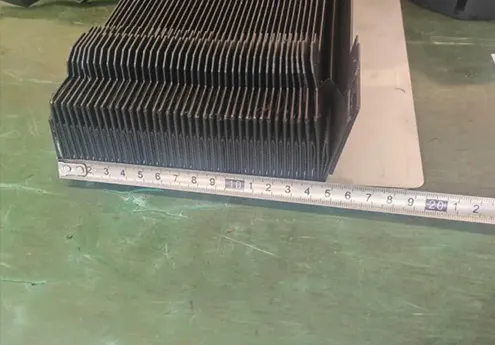synchronous belt vs v belt
Synchronous Belt vs. V-Belt A Comparative Analysis
When it comes to mechanical power transmission in various applications, the choice of belt type can significantly impact performance, efficiency, and maintenance. Among the most common belt types are synchronous belts and V-belts. Understanding the differences, advantages, and potential drawbacks of each can help engineers and technicians make informed decisions for their specific needs.
Definition and Design
Synchronous belts, also known as timing belts, are designed with teeth that fit into corresponding grooves on pulleys. This tooth engagement prevents slippage and ensures that the belt maintains a precise timing and synchronization between the shafts it connects. Synchronous belts are often made from materials like polyurethane or rubber composites, reinforced with fibers for added strength.
In contrast, V-belts feature a trapezoidal cross-section, which allows them to wedge into the grooves of V-shaped pulleys. This design facilitates a snug fit, creating friction that helps in transmitting power. V-belts are commonly manufactured from rubber, with a combination of polyester or other materials for durability.
Performance and Efficiency
One of the primary advantages of synchronous belts is their ability to maintain precise timing and synchronization. This makes them ideal for applications where timing is critical, such as in automotive engines or CNC machines. The efficiency of synchronous belts can reach up to 98%, as there is minimal power loss due to slippage.
V-belts, while generally efficient, can experience slippage, especially under heavy loads or during sudden starts. This can lead to a drop in performance and an increase in wear over time. However, V-belts excel in applications that require high shock absorption, as their flexibility allows them to handle variable loads and accommodate misalignment better than synchronous belts.
synchronous belt vs v belt

Wear and Maintenance
When it comes to longevity, synchronous belts typically have a longer lifespan compared to V-belts. Their robust construction and synchronized operation reduce wear and tear, making them a desirable choice for machinery that operates continuously or at high speeds. However, synchronous belts require precise alignment and tensioning, which can be more challenging during installation and maintenance.
V-belts are generally easier to install and replace, making them more convenient for applications where accessibility is an issue. They can also tolerate some degree of misalignment, reducing the risk of immediate failure. However, their susceptibility to abrasion and degradation due to environmental factors, such as heat and oil, means they might need more frequent replacement.
Cost Considerations
Cost is another crucial factor when choosing between synchronous belts and V-belts. Synchronous belts tend to be more expensive initially due to their specialized manufacturing and materials. However, their longer lifespan and reduced maintenance needs can lead to lower overall costs in the long run.
V-belts, on the other hand, are generally more affordable upfront, making them attractive for budget-conscious applications. Their reasonable replacement frequency may offset the initial savings, particularly in low-demand environments.
Conclusion
In summary, the decision between synchronous belts and V-belts largely depends on the specific requirements of the application. Synchronous belts offer precision and efficiency, making them suitable for applications with strict timing requirements. Conversely, V-belts provide versatility and ease of use, particularly in variable load situations. Evaluating the demands of the system, including alignment, load characteristics, and maintenance capabilities, will help in selecting the most appropriate belt type for optimal performance and reliability.








